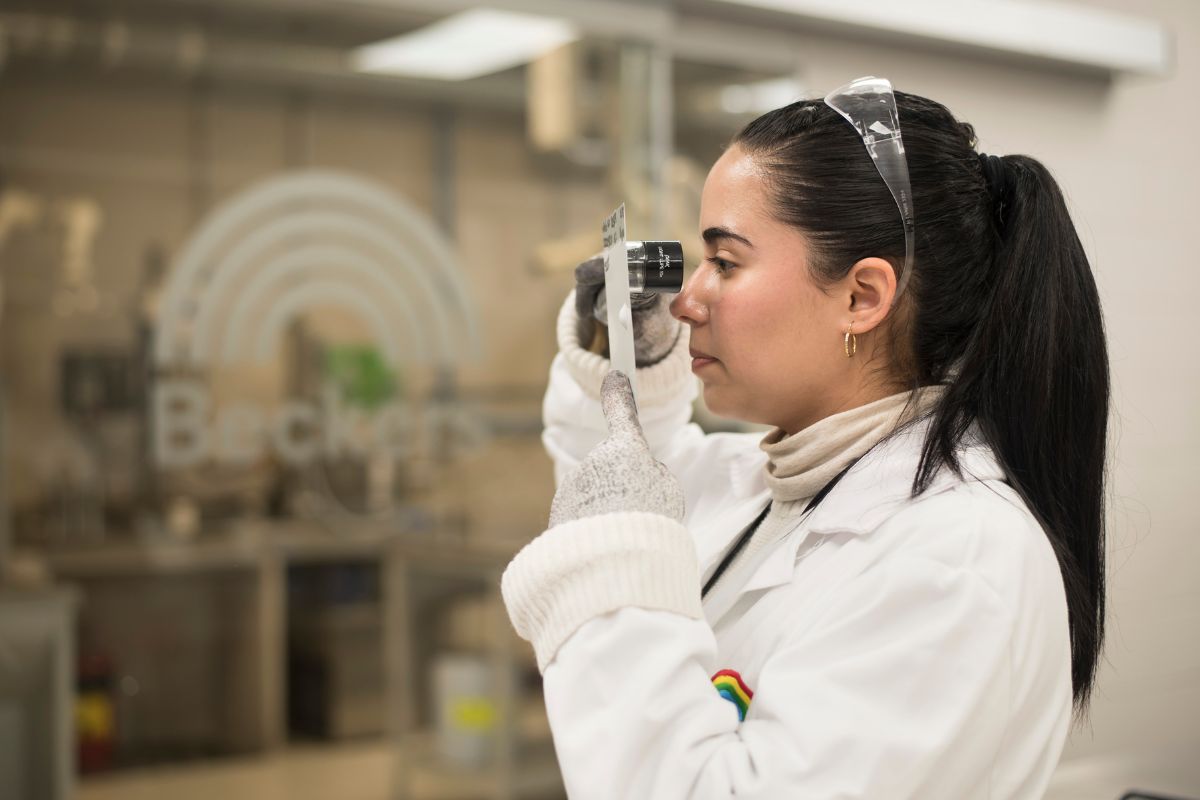Pioneer Stories: Measuring sustainable impact at every touchpoint
To deliver product sustainability, we must be able to quantify and put a number on what we are doing, where we fall short and how far we have come. By measuring sustainability performance, we not only track our own progress and the progress of our partners but enable targeted improvements. So how do we ensure that the data we rely on gives us the level of detail and transparency we require?
At Beckers we have established and begun to integrate in our workflows powerful ways to measure sustainability impact.
Many of the tools we use are also recognized and widely adopted by peers in the science community and regulatory bodies around the world. At the same time, we continue to refine and strengthen our systems, both internally and in collaboration with our partners across the value chain.
Measurability and transparency are central, not just for R&D but for our value proposition to our customers. This is how we demonstrate pioneering performance for positive impact.

"If we can measure it, we can improve it"
The Beckers Sustainability Index (BSI) is firmly embedded in our business and our 2030 targets. A holistic tool that quantifies sustainability and puts every Beckers product into its relevant ‘class’, BSI is our main KPI and has been internationally validated by external assessors.
BSI is complemented by a suite of other tools that measure specific aspects of the overall sustainability impact of our activities and those of our customers and suppliers.
A Life-Cycle Assessment (LCA) assesses the environmental impacts associated with all the stages of the life cycle of a product, process or service, from raw material extraction and processing to manufacture, distribution and use, to the recycling or final disposal of materials. At Beckers we follow the general LCA standards (ISO 14040/14044) and the specific standard for the construction industry (EN 15804+A2). This guarantees that everyone across the value chain measures sustainability in the same way.
LCAs also form part of the Environmental Product Declarations (EPDs) of our customers, which in turn help their customers obtain green building certification points such as BREEAM or LEED.
In recent years we have steadily increased in-house LCA capabilities at Beckers. Indeed, the ability of our Product Sustainability team to deploy different models and system boundaries has been a key factor in our sustainability journey. In 2025 we will expand our in-house capabilities further with the implementation of the LCA Calculator software in all countries, which will allow local teams to generate LCAs on their product portfolio.
One crucial parameter measured in an LCA is the Global Warming Potential or Carbon Footprint of the product (GWP/PCF). This indicates the total greenhouse gas (GHG) emissions associated with the lifecycle of that product, measured as Kg CO2 equivalents. It also can be used to help understand the impact on other environmental aspects, such as lane use, water use, minerals use or ozone depletion potential.
Since committing to The Science Based Targets initiative (SBTi), Beckers has launched two tools to support accurate measurement and data sharing.
An Excel-integrated tool calculates the carbon footprint of a formulation using raw materials codes and quantities that can be manually inputted. From this, simulations are created showing the Carbon Footprint of the formulation when certain raw materials or other input parameters such as coverage, dry film thickness or weight solids are altered.
We are also using an Automated tool, available in Power-BI, which automatically calculates the Carbon Footprint of a local product portfolio by SKU (linked to the C-code for countries in AX). This allows for “hot-spot analysis” of the portfolio, i.e. emissions by product, site, color or customer.
Finally, we will soon release a new ‘Finished Goods database’ that shows you different parameters of our product portfolio, such as BSI score and PCF, and allows direct comparison of product ranges.
Working together
Improving product sustainability (or reducing Scope 3 emissions) is increasingly understood to be a cross-disciplinary challenge.
No longer confined to R&D labs, sales teams are the ambassadors for these next generation technologies and solutions, educating and motivating customers to take what may feel like bold steps. This is how we move towards more sustainable products.
Meanwhile, procurement has a huge role to play in making sure the value of sustainable innovations is recognized, quantified and passed on to the R&D labs.
As a market leader in coil, Beckers has a responsibility and an opportunity to lead the market in sustainable impact measurement. Competitors as well as suppliers and customers are more and more open to innovative solutions that demonstrate real and quantifiable improvement.
By requesting that suppliers provide high quality data to evaluate their raw materials, we are inviting them to participate in the transformation of the value chain to one in which sustainability is built in at every point and protected with every link.
Sharing high quality data with customers creates conditions to work together to improve each other’s sustainability performance, whether through carbon footprint reduction, improved BSI scores, or any number of measures already in operation or still in development. It is the lever that raises our collective ability to innovate and hold one another to account.